
The Metropolitan Archdiocese of Palermo is a Latin diocese of the Catholic Church. It was founded as the Diocese of Palermo in the first century and raised to the status of archdiocese in the 11th century. The archbishop is Corrado Lorefice.
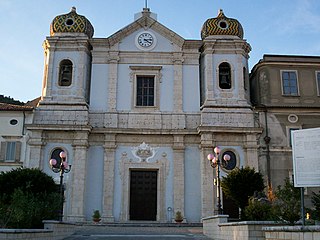
The Diocese of Cerreto Sannita-Telese-Sant'Agata de' Goti is a Latin diocese of the Catholic Church in Campania, Italy, has existed since 1986, when the Diocese of Sant'Agata de' Goti was suppressed, and its territory and Catholic population united to the Diocese of Telese-Cerreto Sannita. The diocese is a suffragan of the Archdiocese of Benevento.

The Archdiocese of Messina is a Latin archdiocese of the Catholic Church. It was founded as the Diocese of Messina but was raised to the level of an archdiocese on 30 September 1986 with the merging with the former Diocese of Lipari and the Territorial Prelature of Santa Lucia del Mela (1206), and as suffragans the Diocese of Patti and Diocese of Nicosia.

The Diocese of Mazara del Vallo is a Latin diocese of the Catholic Church in far western Sicily. It is a suffragan of the Archdiocese of Palermo.

The Archdiocese of Agrigento is a Latin Church ecclesiastical jurisdiction or archdiocese of the Catholic Church in Sicily, Italy. The historic diocese of Agrigento was also known as the Diocese of Girgenti, and Diocese of Agrigentum. It used to be a suffragan of the Archdiocese of Monreale. A metropolitan see, the Archdiocese of Agrigento has two suffragan dioceses in its ecclesiastical province.

The Archdiocese of Siracusa, also known as Syracuse, is a Latin Church ecclesiastical territory or diocese of the Catholic Church in Sicily. It became an archdiocese in 1844. The current archbishop is Francesco Lomanto.

The Archdiocese of Catania is a Latin Church diocese of the Catholic Church in Sicily, southern Italy, with its seat in Catania. It was elevated to an archdiocese in 1859, and became a metropolitan see in 2000. Its suffragans are the diocese of Acireale and the diocese of Caltagirone.
The Italian Catholic diocese of Bertinoro existed from 1360 to 1986. In that year it was merged with the diocese of Forlì to create the diocese of Forlì-Bertinoro.

The Diocese of Melfi-Rapolla-Venosa is a Latin diocese of the Catholic Church in Basilicata, southern Italy. In 1986 the historic Diocese of Melfi-Rapolla was united with the Diocese of Venosa. The diocese is a suffragan of the Archdiocese of Potenza-Muro Lucano-Marsico Nuovo. The Abbey of the Santissima Trinità at Venosa comes under the Diocese.
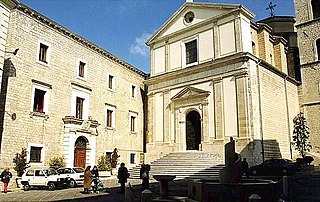
The Archdiocese of Potenza-Muro Lucano-Marsico Nuovo is a Latin diocese of the Catholic Church in Basilicata, southern Italy, created in 1986. In that year the Diocese of Muro Lucano was united into the Archdiocese of Potenza e Marsico Nuovo, which had been elevated to an archdiocese in 1973, and made a metropolitan see in 1976. The historical Diocese of Potenza was united with the Diocese of Marsico Nuovo in 1818.

The Diocese of Conversano-Monopoli is a Latin diocese of the Catholic Church in Apulia. It has existed since 1986, when the diocese of Monopoli was united with the historic diocese of Conversano. The diocese is a suffragan of the Archdiocese of Bari-Bitonto.
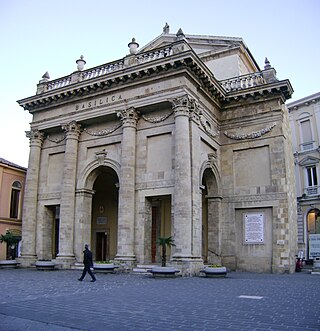
The Archdiocese of Lanciano-Ortona is a Latin diocese of the Catholic Church that has existed under this name since 1986. Since 1982, it has been a suffragan of the Archdiocese of Chieti-Vasto.

The Diocese of Caserta is a Latin diocese of the Catholic Church in Campania, southern Italy. It is a suffragan of the Archdiocese of Naples. In 1818 Pope Pius VII united this see with the diocese of Caiazzo, but Pope Pius IX made them separate sees. In 2013 in the diocese of Caserta there was one priest for every 1,703 Catholics; in 2016, there was one priest for every 2,008 Catholics. The diocesan Major Seminary currently (2019) has four seminarians.
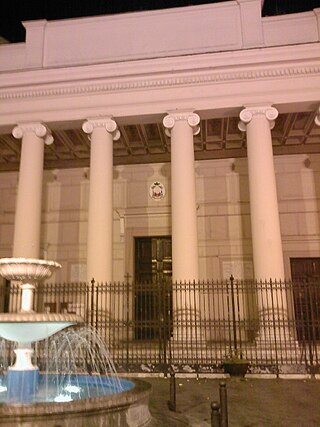
The Diocese of Acerra is a Latin diocese of the Catholic Church in Campania, southern Italy, eight miles east of Naples, in the area once called Terra Laboris (Liburia). It has existed since the 11th century. It is a suffragan of the Archdiocese of Naples.

The Diocese of Sessa Aurunca is a Latin diocese of the Catholic Church in southern Italy. Since 1979 it has been a suffragan of the Archdiocese of Naples.
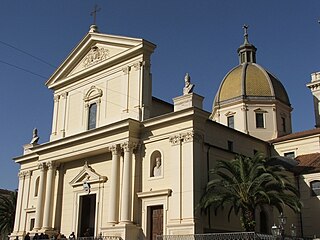
The Diocese of Lamezia Terme is a Latin Church diocese of the Catholic Church in Calabria. In 1818 the ancient see of Martirano, the former Mamertum, was united to the diocese of Nicastro. The diocese was then a suffragan of the archdiocese of Reggio in Calabria. In 1986, the historic Diocese of Nicastro had its name changed. It is currently called the Diocese of Lamezia Terme, and it is a suffragan of the Archdiocese of Catanzaro-Squillace. The name change reflects the incorporation of the comune of Nicastro into Lamezia Terme, an administrative change of 1968 on the part of the State of Italy.

The Archdiocese of Monreale is a Latin archdiocese of the Catholic Church in Sicily. As of 2000 it is no longer a metropolitan see, and is now a suffragan of the Archdiocese of Palermo.
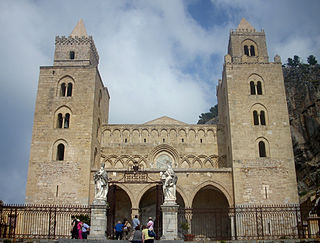
The Diocese of Cefalù is a Latin diocese of the Catholic Church in Sicily, southern Italy. It is a suffragan of the Archdiocese of Palermo.
The Italian Catholic diocese of Lacedonia, a suffragan of the archdiocese of Benevento in Campania, existed until 1986 when incorporated into the reorganized Roman Catholic Diocese of Ariano Irpino-Lacedonia.

The Roman Catholic Diocese of Lipari was a Latin diocese of the Roman Catholic Church located in the town of Lipari in the Aeolian Islands of Sicily, Italy. The diocese consists of the entire island of Lipari as well as seven smaller adjacent islands. It is now incorporated into the Archdiocese of Messina-Lipari-Santa Lucia del Mela.



















